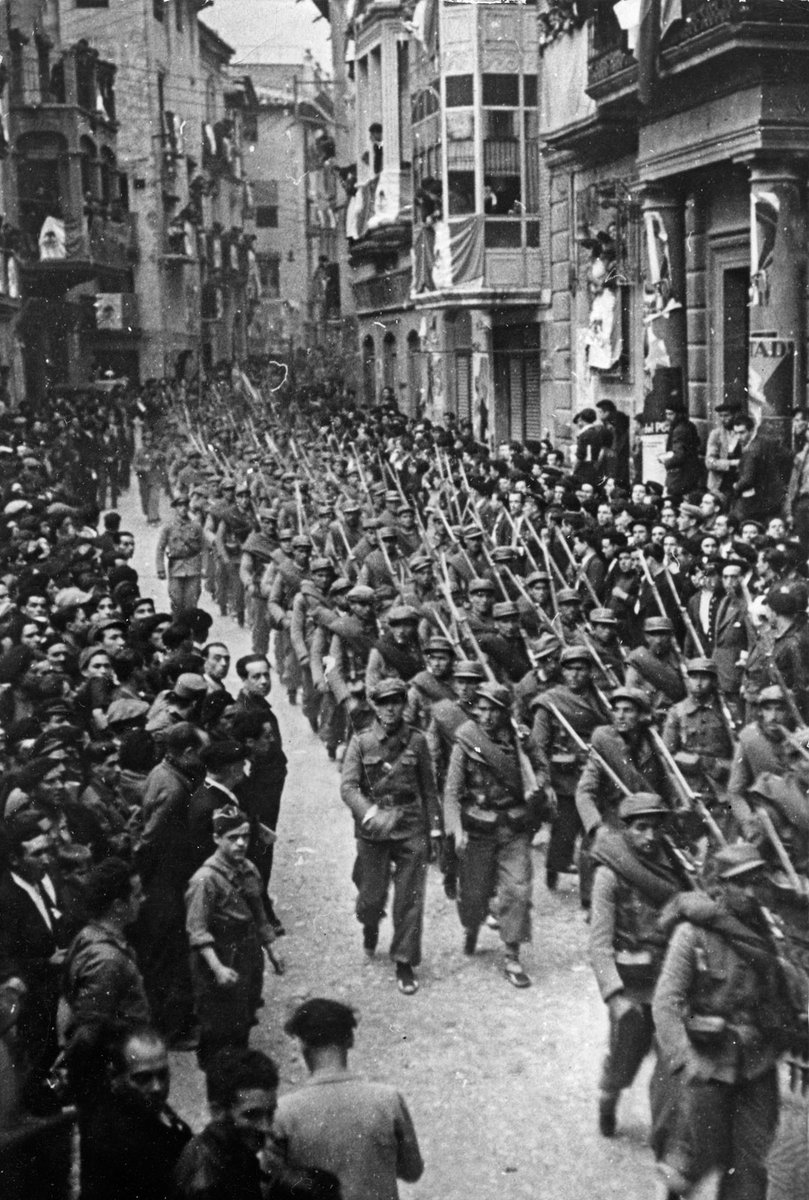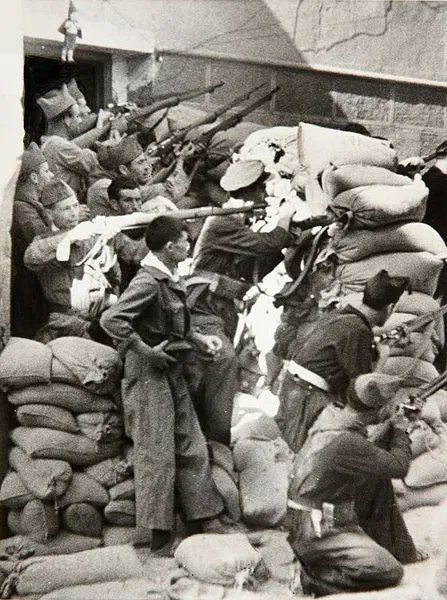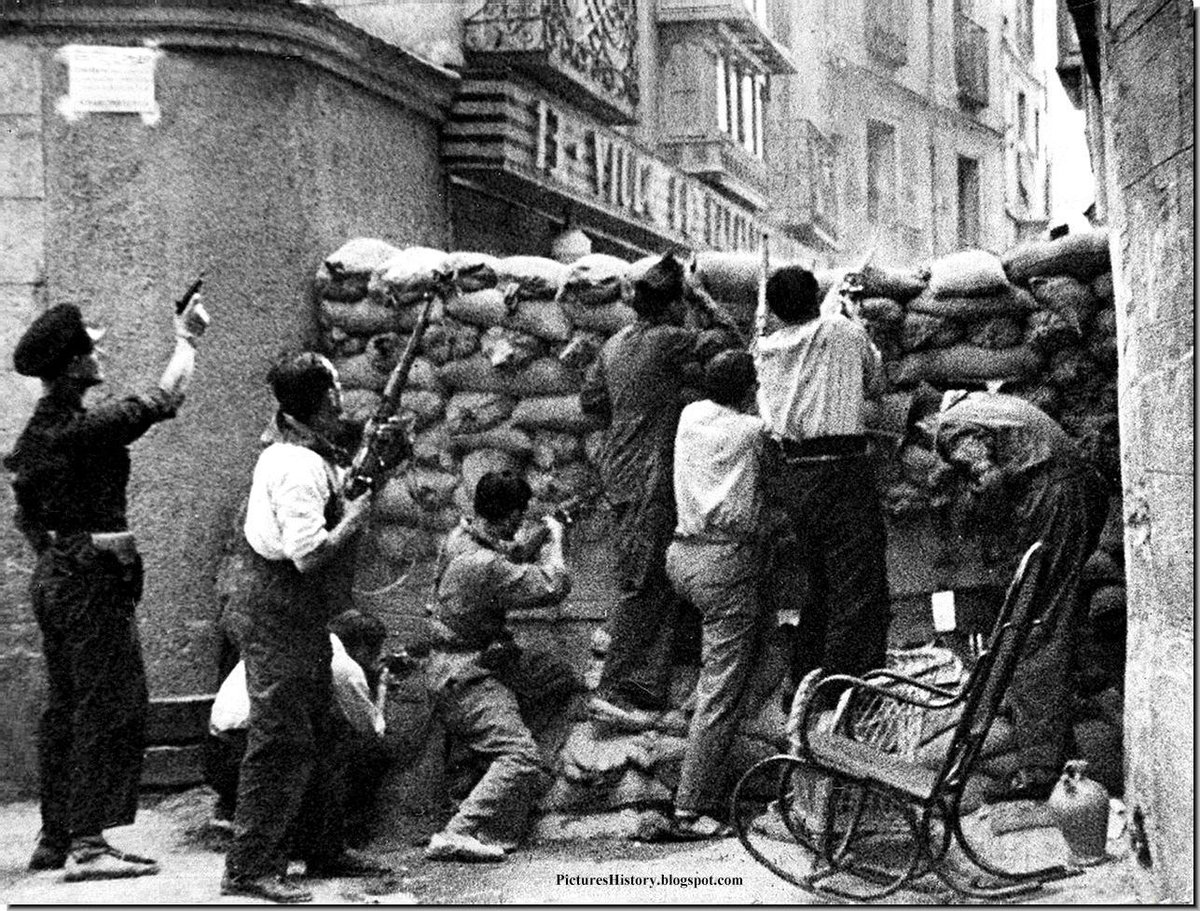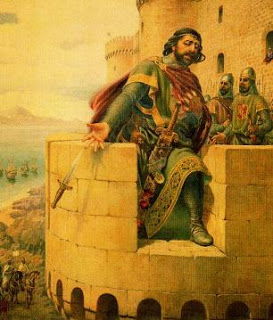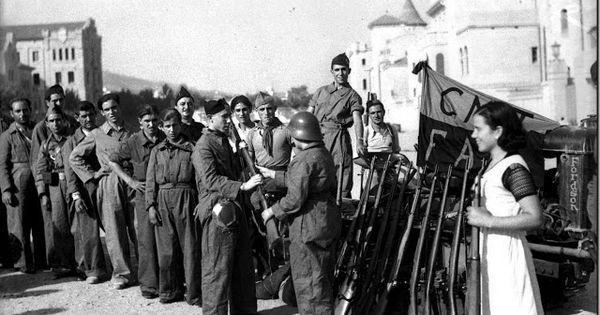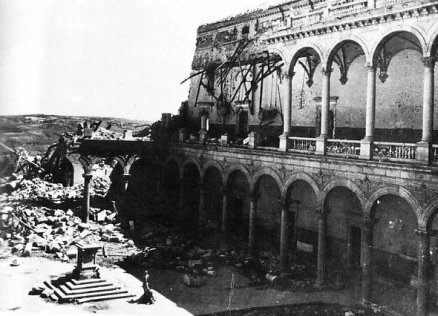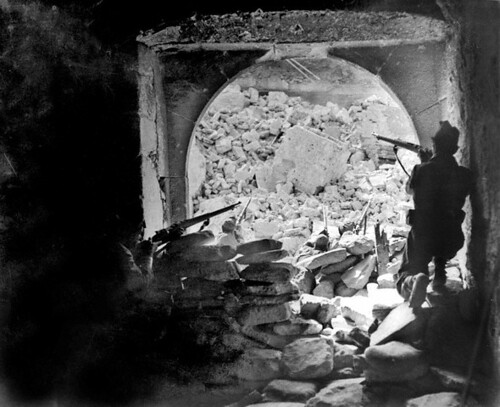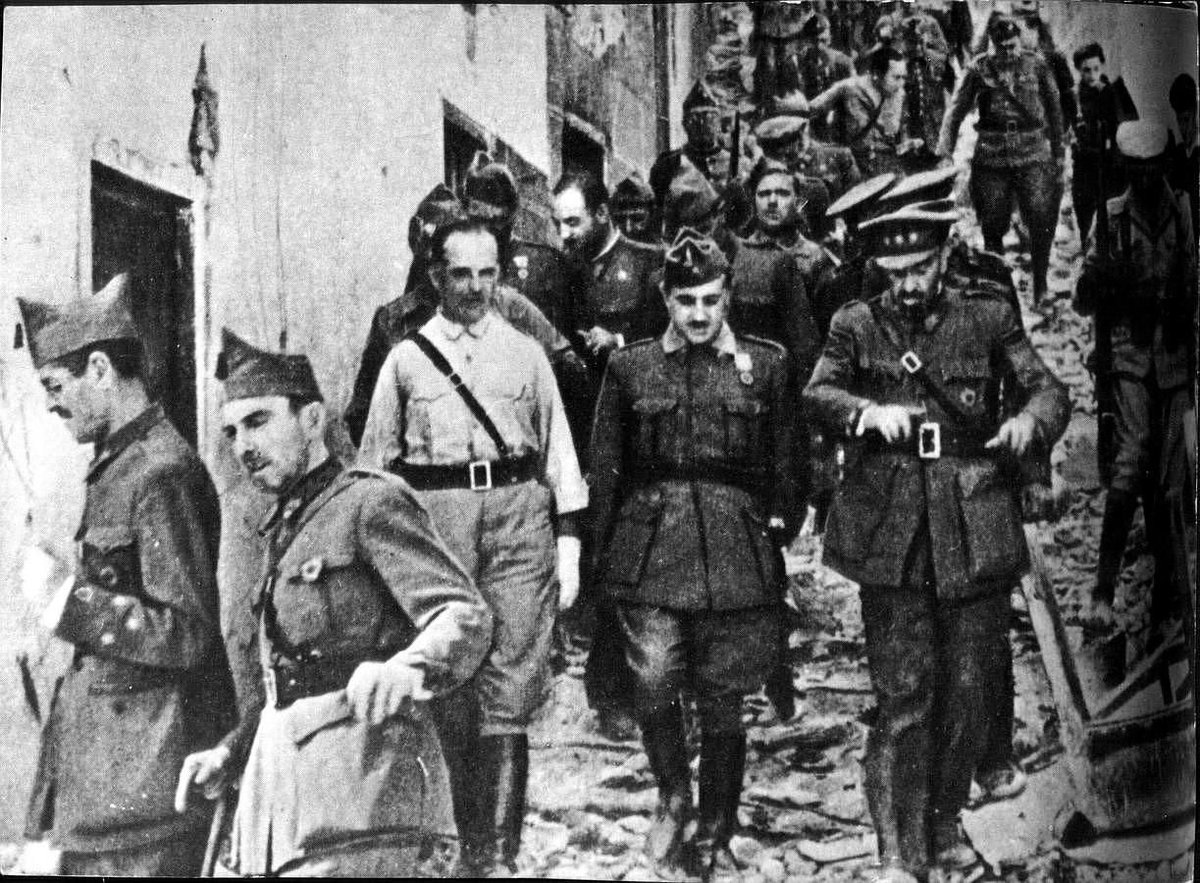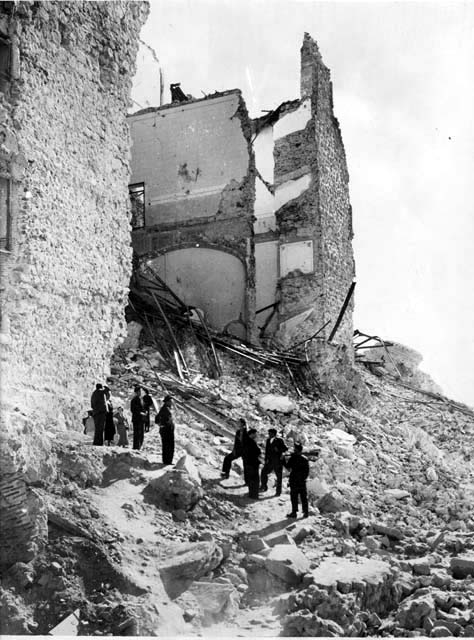The most important battle of the early Spanish Civil War centered around the Alcázar of Toledo, a medieval fortress. There, 8000 loyalist Republicans surrounded a small group of rebel Nationalists for months of brutal urban combat. This thread will cover the Siege of the Alcázar.
Background. The Spanish Civil War began on July 17, 1936 when conservative officers, fearing a communist takeover, launched a coup against the newly-elected leftist government. Although the rebels secured the loyalty of most of the military, they failed to achieve quick success.
The biggest obstacle to the rebels were hostile urban areas. Spain’s leftist government had allowed anarchist and communist militia groups to grow to large numbers. Mob violence was common and the perpetrators were not punished. Major cities only had small military garrisons.
Toledo was a strategically unimportant city in the center of Spain. The city held a small ammunition factory and was 64 kilometers from Madrid. At the highest point of Toledo was the Alcázar, an imposing stone fortification that had been used as a Roman palace in the 3rd century.
The Alcázar was a sprawling complex that had been restored several times, and was used as the residence of Spanish kings after the reconquest of Toledo from the Muslim Moors. King Philip I abandoned the palace, but in the 18th century it was turned into a military academy.
When the rebels launched their coup on the 17th, the liberal Republican government sent orders to the military governor of the province, Col. José Moscardó, to ship the contents of the ammunition factory to Madrid to help suppress the coup. Moscardó, backing the rebels, refused.
The Republicans grew impatient with the delays. They dispatched a force of 8,000 political police and left-wing militiamen to the city to seize the ammunition. Toledo was isolated from the main rebel force in Morocco and the Republicans expected an easy propaganda victory.
With the Republicans marching on the city, the Captain of the Military Academy read a “declaration of war” and Col. Moscardó issued warrants for the arrest of prominent local leftists. The loyalist governor of the local prison is arrested. Soldiers were stationed around the city.
The Republican column from Madrid arrives later that day, facing heavy resistance. They surrounded the ammunition factory and negotiate with the troops stationed there. While negotiations are ongoing, the rebels destroy the machinery and load the ammo into trucks for the Alcázar.
By July 22th, the Republicans controlled most of Toledo. Roughly 1000 Nationalist troops, right-wing militiamen, and their families have fled to the Alcázar. They took with them 100 hostages, mostly political police officers and family members of prominent Republican officials.
Although the Republicans had superiority in numbers and firepower, they could not simply bomb the Alcázar into submission without killing the hostages. As happened in many cities, reprisals against coup-backers began. On July 23 they captured Col. Moscardó’s 23-year-old son Luis.
The Commissar of Toledo’s Worker’s Militia called that day Col. Moscardó, telling him that if the defenders did not surrender, Luis would be executed. Moscardó asked to speak to Luis, who asked how to proceed. Moscardó replied: “Commend your soul to God and die like a patriot.”
Luis was shot immediately. The execution recalled the actions of Alonso Pérez de Guzmán during the medival Reconquista of Spain. Guzmán, besieged in his castle, was told by a Muslim emissary that if he didn’t surrender they would cut his son’s throat. Guzmán threw down a knife.
The Siege of the Alcázar took on national significance. Nationalist propagandists claimed it was a symbol of Spain’s tradition standing against the godless communism of the Republicans. The loyalists, too, saw the castle as a relic of Spain’s past standing in the way of progress.
The standoff dragged on for months with little progress. In mid-August, the Republicans launched a series of increasingly large infantry wave attacks on the castle. Although they captured many of the strongpoints surrounding the castle, they failed to breach its walls.
On August 22, a Nationalist airplane overflew the Alcázar, dropping a crate full of food and a note from General Franco promising that a rescue force was en route. Many offers of surrender, facilitated by sympathetic foreign ambassadors, were made to and refused by the defenders.
Intermittent artillery bombardments weakened the Alcázar’s defenses. In mid-September, the Republicans adopted a deadly new strategy: mining. Experienced miners dug tunnels beneath important points in the fortress, then massed high explosives beneath them.
The explosions destroyed many of the Alcázar’s guard towers. Republican Prime Minister Francisco Largo Caballero himself visited the front and personally detonated one of the mines. Minutes after each detonation, the Republicans launched tank and infantry attacks.
By late September the fortress was largely in ruins. Although many of the major defensive positions had to be abandoned by the Nationalists, the Republicans could not navigate their armor through the wreckage. Bitter fighting with small arms and grenades ensured.
On the morning September 27, the Republicans made their final assault. The northern parts of the fortress are overrun. However, the defenders barely manage to hold on. The Nationalist relief column finally arrived and counterattacked, devastating the retreating Republicans.
As the rescue force enters the city, Col. Moscardó emerges from the fortress to greet their commanding officer, stating: “Nothing to report in the Alcázar.” The end of the siege was a huge, much-needed, propaganda victory for the Nationalists, who still had to move on Madrid.
The fortress is left in ruins for years, a memorial to the heroic defense. Franco authorizes Col. Moscardó to wear a black cloak with his uniform to mourn his son Luis. The fate of the hostages taken by the Nationalists is still debated, with some claiming they were executed.

 Read on Twitter
Read on Twitter





